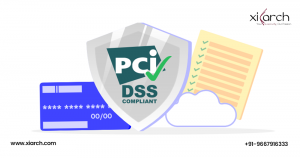Introduction
In today’s digital landscape, businesses rely heavily on cloud technology to store and manage data. However, with great convenience comes great responsibility. Cloud security assessment is a critical aspect of maintaining the integrity of your data. In this comprehensive guide, we’ll delve into the topic of “Avoiding Common Pitfalls in Cloud Security Assessment.” We’ll explore the challenges, best practices, and strategies to help you safeguard your data effectively.
The Significance of Cloud Security Assessment
Cloud security assessment is the process of evaluating and ensuring the security of data stored in the cloud. It’s vital to understand the common pitfalls in this process to protect your organization from potential threats.
Why is Cloud Security Assessment Important?
Securing sensitive data in the cloud is paramount. A breach can lead to significant financial losses and damage to your reputation. To ensure comprehensive protection, you must:
Conduct Regular Audits: Regular assessments help identify vulnerabilities before they are exploited by malicious actors.
Comply with Regulations: Cloud security assessments ensure compliance with industry regulations and data protection laws.
Prevent Data Loss: Assessments can help prevent data loss due to technical glitches or security breaches.
Maintain Customer Trust: A secure cloud environment fosters trust among your customers.
Avoiding Common Pitfalls in Cloud Security Assessment
Now, let’s dive into the core of our topic and explore how to steer clear of common pitfalls when assessing cloud security.
Neglecting Access Control
Unauthorized Access
One of the most common pitfalls is neglecting access control. Failing to restrict access can lead to unauthorized personnel gaining entry to your sensitive data.
To avoid this, implement robust access controls, including:
Multi-Factor Authentication (MFA): Require multiple forms of verification for users to access data.
Role-Based Access Control (RBAC): Assign permissions based on job roles.
Regular Access Reviews: Periodically review and update access permissions.
Poor Data Encryption
Data Vulnerability
Inadequate data encryption is another critical pitfall in cloud security. Unencrypted data is vulnerable to interception and misuse.
To avoid this, follow these encryption best practices:
Use Strong Encryption Algorithms: Utilize robust encryption algorithms to protect data.
Data in Transit and at Rest: Encrypt data both in transit and at rest.
Key Management: Implement secure key management practices.
Lack of Regular Updates and Patching
Vulnerability Exploitation
Failure to regularly update and patch your cloud infrastructure can leave it vulnerable to security breaches.
To avoid this, establish a robust update and patch management process, including:
Automated Patching: Implement automated systems for timely updates.
Regular Vulnerability Scans: Scan for vulnerabilities and patch them promptly.
Backup Systems: Ensure data backup in case updates cause issues.
Inadequate Backup and Disaster Recovery Plans
Data Loss
Without proper backup and disaster recovery plans, data loss is a real threat, especially in the event of a security breach or technical failure.
To avoid data loss, consider the following:
Regular Backups: Schedule regular data backups.
Offsite Backup Storage: Store backups in an offsite location.
Test Recovery Plans: Ensure your disaster recovery plans are effective.
Insufficient Employee Training
Human Error
Humans are often the weakest link in security. Inadequately trained employees can inadvertently compromise data security.
To mitigate this risk:
Comprehensive Training: Train employees on security best practices.
Simulate Threats: Conduct simulated security drills to prepare employees for real threats.
Create Security Awareness: Foster a culture of security within the organization.
Inadequate Monitoring and Alerts
Delayed Response
Without proper monitoring and alerts, you may not detect security breaches in a timely manner, allowing threats to persist.
To avoid this:
Implement Intrusion Detection Systems (IDS): IDS can alert you to potential security breaches.
Continuous Monitoring: Monitor your cloud environment in real-time.
Incident Response Plans: Have a well-defined incident response plan.
FAQs
Q: What is the primary goal of cloud security assessment?
A: The primary goal is to evaluate and ensure the security of data stored in the cloud, identifying vulnerabilities and taking steps to mitigate risks.
Q: How can I prevent unauthorized access to my cloud data?
A: Implement multi-factor authentication (MFA), role-based access control (RBAC), and conduct regular access reviews.
Q: Why is data encryption essential in cloud security?
A: Data encryption protects data from interception and misuse, ensuring its confidentiality and integrity.
Q: What should be included in a disaster recovery plan?
A: A disaster recovery plan should include regular backups, offsite storage, and tested recovery procedures.
Q: How can I improve employee awareness of security issues?
A: Comprehensive training, threat simulations, and fostering a security-conscious culture are effective ways to improve employee awareness.
Q: What is the significance of intrusion detection systems (IDS)?
A: IDS helps in detecting potential security breaches in real-time, enabling a quicker response to threats.
Conclusion
In conclusion, avoiding common pitfalls in cloud security assessment is crucial for maintaining the integrity of your data and safeguarding your organization’s reputation. By addressing issues related to access control, data encryption, updates and patching, backup plans, employee training, and monitoring, you can create a robust cloud security strategy.



